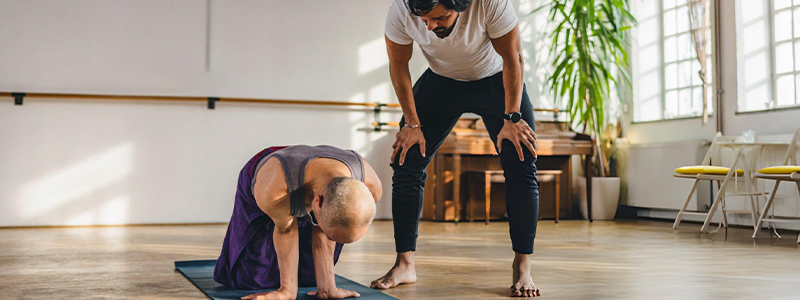Archives

Integrative Healing: The Synergy of Yoga Therapy and Physical Therapy
In the realm of health and wellness, two prominent disciplines often come to the fore: yoga therapy and physical therapy. Both are dedicated to healing and improving physical conditions, yet they differ in their methodologies and philosophies. Understanding these distinctions and how these practices can be integrated offers a pathway to enhanced healing and overall well-being.
Understanding Yoga Therapy
Yoga therapy extends beyond traditional yoga classes, focusing on individualized therapeutic applications. It encompasses a wide array of techniques, including physical postures (asanas), breathing exercises (pranayama), meditation, and lifestyle guidance. The holistic nature of yoga therapy means it addresses not only the physical body but also the mind and spirit, aiming to restore balance and harmony within the individual.
The Role of Physical Therapy
Physical therapy, on the other hand, is a cornerstone of modern rehabilitative medicine. Physical therapists are experts in human movement and are trained to diagnose and treat a variety of musculoskeletal and neurological conditions. Their goal is to alleviate pain, restore function, and improve mobility through targeted exercises, manual therapy, and other modalities like ultrasound and electrical stimulation.
Key Differences and Common Goals
While yoga therapy and physical therapy share the ultimate goal of healing physical conditions, their approaches differ significantly. Physical therapists primarily focus on the physical body, using evidence-based practices to treat specific injuries and conditions. Yoga therapists, however, take a broader approach, considering the interconnectedness of body, mind, and spirit in their therapeutic plans.
The Power of Integration
Integrating yoga therapy into physical therapy can offer profound benefits. This synergistic approach can be particularly effective for patients with chronic conditions such as arthritis. For example, yoga’s gentle stretches and poses can enhance blood circulation, reducing pain and stiffness, while physical therapy exercises strengthen muscles and improve joint stability.
Promoting At-Home Physiotherapy with Yoga
One of the most effective ways to leverage the benefits of both therapies is through at-home physiotherapy. This approach not only provides convenience but also allows for a tailored, consistent, and holistic healing process. Here’s how you can integrate these practices at home:
1. Creating a Routine: Establish a regular schedule for your therapy sessions. Consistency is key to achieving long-term benefits.
2. Personalized Care: Work with your therapist to develop a customized plan that incorporates both physical therapy exercises and yoga practices. This ensures that your treatment is tailored to your specific needs and conditions.
3. Utilizing Technology: Make use of online resources and virtual consultations. Many therapists offer remote sessions and guided practices, making it easier to follow through with your routine.
4. Focusing on Holistic Health: Incorporate mindfulness and meditation into your routine. This not only helps in physical recovery but also reduces stress and promotes emotional well-being.
Practical Steps to Get Started
Consult Professionals: Start by consulting with both a physical therapist and a yoga therapist. Their combined expertise will help you create a balanced and effective at-home program.
Set Realistic Goals: Define clear, achievable goals for your therapy. Whether it’s reducing pain, improving mobility, or enhancing overall well-being, having specific targets will keep you motivated.
Create a Healing Space: Designate a quiet, comfortable space in your home for your therapy sessions. Ensure it’s free from distractions and equipped with any necessary props, such as yoga mats, blocks, or straps.
Monitor Your Progress: Keep track of your progress through a journal or app. Note any changes in pain levels, mobility, and overall well-being. Regularly review your progress with your therapists and adjust your plan as needed.
The integration of yoga therapy and physical therapy represents a powerful approach to healing. By combining the targeted, evidence-based techniques of physical therapy with the holistic, mind-body focus of yoga, individuals can experience comprehensive healing and improved quality of life. Embracing at-home physiotherapy allows for a flexible, personalized approach, making it easier to incorporate these beneficial practices into your daily routine. Whether dealing with chronic conditions or recovering from injury, this integrative approach offers a path to lasting health and well-being.


